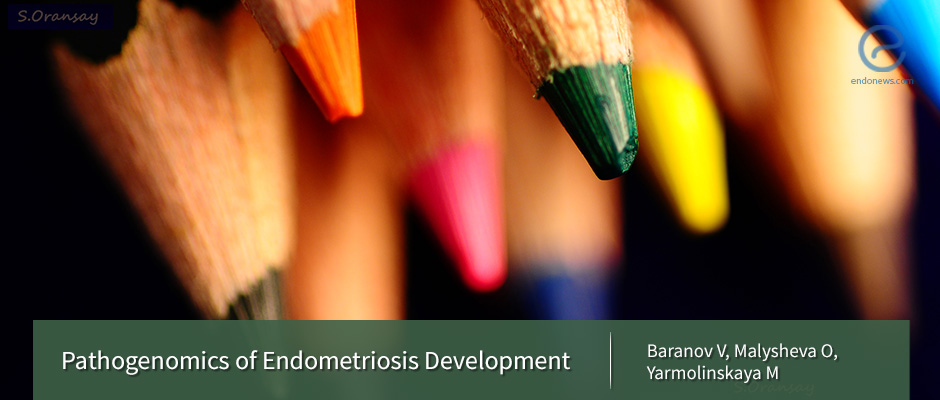Endometriosis Development: Pathogenesis and genomics
Jul 26, 2018
Pathogenomics of Endometriosis Development
Key Points
Highlights:
- Endometriosis development genetic program (EMDP) has at least three critical phases. First one corresponds to the initial stages of the genitourinary tract in female embryos, while the second and third stages take place in postnatal life.
- Progenitor and stem cells (SCs) of the eutopic endometrium are the starting players.
- The genes responsible for the female reproductive tract development as HOX and WNT families can regulate mesoderm differentiation and SCs trafficking.
Importance:
- Accepting and studying endometriosis as a matter of developmental genetics is a principal goal of the present paper. The origin of endometriotic cells, the genetic and epigenetic factors contributing to the initiation and growth of endometriotic lesions are reviewed.
- In agreement with this EMDP hypothesis, hormonal treatment couldn't prevent the invasion and implantation of endometrial stem cells.
What's done here:
- The authors reviewed 48 papers to support their hypothesis.
Key results:
- EMDP in elaborating a new strategy for endometriosis prediction, prevention and treatment are discussed.
- Metaplasia of endometrial (epithelial) cells into mesenchymal cells so-called EMT may play the key role in pathogenomics of endometriosis.
- Finding stemness-related genes such as OCT4, SOX2, SOX15, NOTCH1, TWIST1 in endometriotic lesions, may help to show the mechanism of altered SCs behavior.
Limitations:
- SP1 and SP3 phase need further global molecular studies of gene expression and micro RNA analyses.
Lay Summary
In this review recently published in the International Journal of Molecular Sciences, Baranow et al from Saint Petersburg, Russia, hypothesize the existence of an endometriosis development genetic program (EMDP) that governs the origin of endometrium stem cells programmed for endometriosis; their transition (metaplasia) into mesenchymal SCs; and their invasion of the peritoneum and progression to endometriotic lesions.
Discussing the role of SCs they work on these three sensitive periods (SP). SP1 is the initial stage of female reproductive tract development that corresponds to 8-10 weeks of embryogenesis and mainly the failure of expression of well known HOX, WNT families, CDKN1A alterations and other genes result in mesodermal deregulation and an abnormal SC placement.
Also, harmful effects of some toxins (like pesticides, endocrine disruptors, oxidative stress) during embryonic development results dislocation of primitive endometrial tissue outside the uterine cavity.
During SP2, EMDP concerns the presence of dormant endometrial cells in the endometrium, especially in the basal layer (the junction of endometrium-myometrium). After staying dormant for many years, some provocative stimuli trigger the endometrial (epithelial) cells transition (metaplasia) into mesenchymal SCs.
The third sensitive period of EMDP is the growth of endometriosis in peritoneal cell lines. Authors explain it by the invasion of the metaplasic stem cells from endometrium or activation of mesodermal embryonic cells to change into cells of the endometrium, within Mullerian duct remnants. This induces adhesion, proliferation, invasion angiogenesis and growth of endometriotic stem cells into endometriotic lesions.
"It looks very awarding that only –omics analysis of massive endometriosis data stratified according to system genetics architecture and collected according to International Conference on Bioinformatics and Biomedicine regulations may pave a reliable way to the ultimate solution of endometriosis mystery and maybe give more credit to existence of the special developmental program in pathogenomics of endometriosis", concluded the authors.
Research Source: https://www.ncbi.nlm.nih.gov/pubmed/29937493
endometriosis developmental pathway pathogenomics mesenchymal stem cells HOXA WNT metaplasia invasion adhesion proliferation -omics

